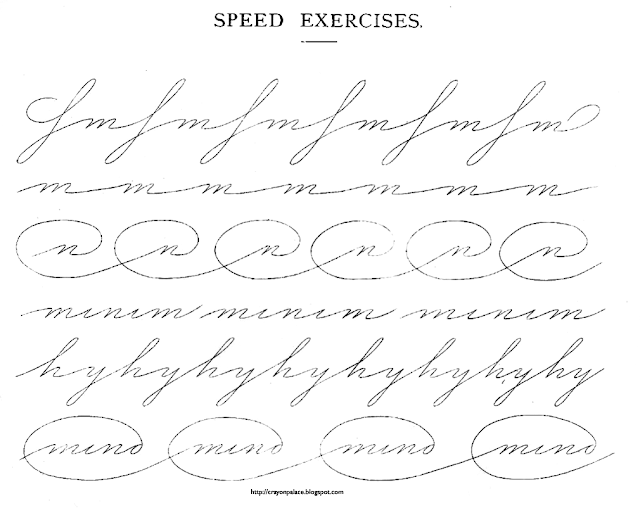 |
| Mr. Sykes |
The practice sheet in this collection about cursive writing contain a comprehensive System embracing all the instruction required to secure Legibility, Speed, and Symmetry in writing. The series of Movement Exercises which is given in combination with the letter forms add interest, to the lessons while developing a perfect command of the pen. To Teachers in Elementary Schools, the portion devoted to an analysis of the letters should be of great value, as being applicable to any style of writing. Teachers of Adult Classes are furnished with a method of instruction as attractive as it is thorough; candidates for the Civil Service appointments and home students can, with a little application, make a distinct improvement in their writing in a very short time. This System has stood the test of many years practice.
Sit fairly erect with both feet flat on the ground the right foot a little in advance of the left. Your left side - should be nearest the desk and your body supported by your left arm, so that the right may have freedom of movement. The lower edge of the book must be parallel with the edge of the desk and well up so as to make room for the arm. Keep your book a little to your right, except for vertical writing when it should be directly in front of you. Avoid stiffness in position but don't lounge; the direction of the writing is largely governed by the attitude assumed.
 |
| slant |
Uniformity of Slant is indispensable to good writing and is the result of correct movement. An effective method of acquiring this object is to rule a number of lines at the required slant upon a loose sheet of paper and place it under the sheet written upon so that the lines may appear faintly through.
Place the penholder at about one inch and a quarter from the pen point against the first joint of the second finger, and hold it there with the end of the thumb, letting it cross the first finger in front of the knuckle joint. Now rest the first finger lightly on top of the pen. Lower the third and fourth fingers bent," and use the surface of the nails as a sliding support for the hand. Let the wrist lie flat without touching the desk and mind that both points of the pen touch the paper evenly.
 |
| Holding the pen or pencil. |
The accompanying cut shows the arm in position for writing. (pictured below) Holding the pen as already described, the arm is slid lightly upon the desk in a natural position of about 6o° slant. The muscle in front of the elbow acts as a movable slide to carry the hand across the paper, the hand itself sliding at the same time on the surface of the nails of the third and fourth fingers. The same relative position of the hand and arm must be maintained throughout. Do not move the hand independently of the arm. Form the small letters by extending and contracting the fingers that hold the pen, moving the arm across simultaneously. The Capital letters are best made by means of the muscle of die forearm only, keeping the hand and fingers perfectly rigid.
 |
| Left, cover of the Sykes's Manual of Penmanship, Right, Forearm Slide Position pictured. |

















